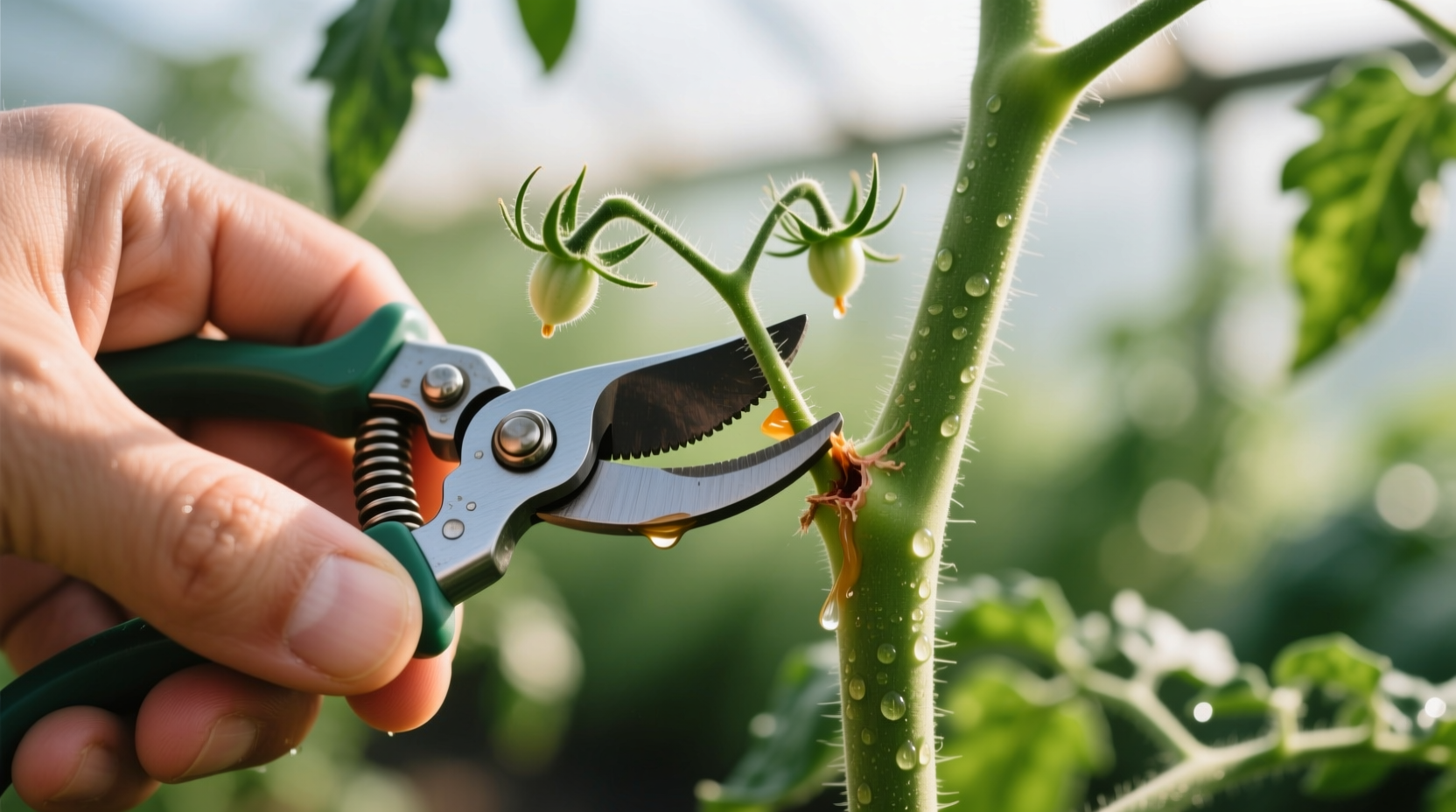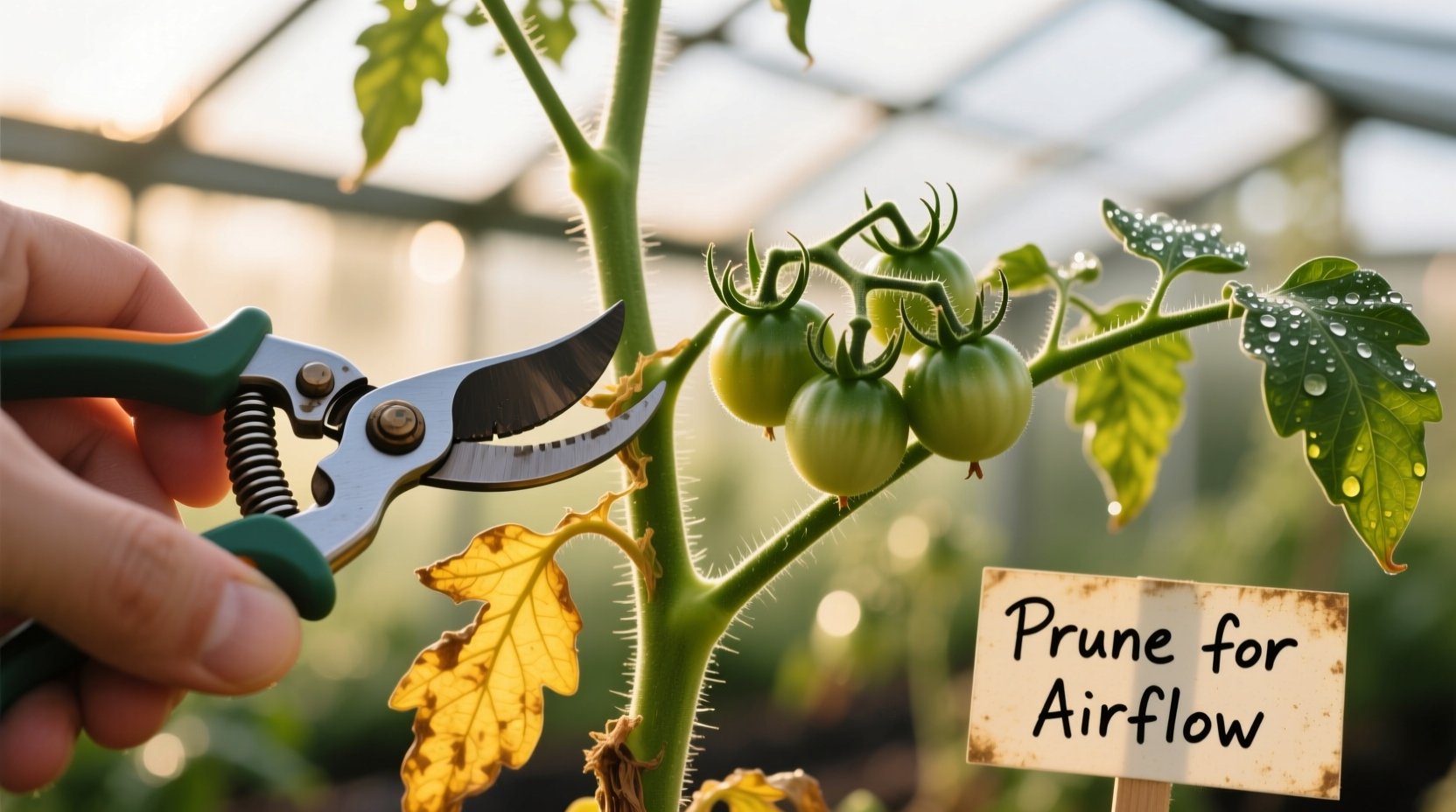Why Pruning Matters for Your Tomato Plants
Tomato plant pruning isn't just gardening tradition—it's horticultural science. Research from Cornell University's College of Agriculture shows properly pruned indeterminate varieties produce larger, earlier-ripening fruit with significantly reduced incidence of fungal diseases like early blight. The key lies in understanding your tomato's growth pattern. Unlike many vegetables, tomatoes respond dramatically to selective removal of non-productive growth, redirecting the plant's energy toward fruit development rather than excessive foliage.

Determinate vs. Indeterminate: The Critical First Step
Before you make your first cut, you must identify your tomato variety. This distinction determines your entire pruning approach. Mistaking one type for another can severely reduce your harvest.
| Characteristic | Determinate Tomatoes | Indeterminate Tomatoes |
|---|---|---|
| Growth Habit | Bush-type, stops growing at 3-4 feet | Vining, continues growing until frost |
| Flowering Pattern | Flowers appear simultaneously | Flowers continuously along new growth |
| Fruit Production | Single major harvest period | Continuous production throughout season |
| Pruning Needs | Minimal pruning required | Regular pruning essential |
| Common Varieties | Roma, Celebrity, Marglobe | Beefsteak, Cherokee Purple, Sungold |
Essential Tools and Timing for Success
Use clean, sharp bypass pruners or simply your fingers for small suckers. Disinfect tools between plants with a 10% bleach solution or rubbing alcohol to prevent disease transmission. The optimal time for tomato plant pruning is during dry morning hours when plants are least stressed. Avoid pruning during extreme heat or when plants are wet, as this creates entry points for pathogens.
According to the University of California's Agriculture and Natural Resources department, the critical pruning window begins when plants reach 12-18 inches tall and continue weekly during peak growing season. Stop pruning 3-4 weeks before your expected first frost to allow remaining fruit to mature.
Step-by-Step Pruning Techniques
For Determinate Varieties
These bush-type tomatoes require minimal pruning. Focus only on removing yellowing or diseased leaves at the plant's base. Never remove the growing tip, as determinate varieties set their fruit in a single flush. Excessive pruning can actually reduce your harvest by removing potential fruiting sites.
For Indeterminate Varieties
Follow this systematic approach for maximum yield:
- Identify suckers: Locate the small shoots growing in the crotch between main stem and branches
- Timing matters: Remove suckers when 2-4 inches long for cleanest healing
- Single-stem method: For container gardening, remove all suckers to create one main vine
- Two-stem method: Most recommended for garden beds—keep the main stem plus one strong sucker below the first flower cluster
- Cutting technique: Make clean 45-degree cuts just above leaf nodes using sterilized pruners
Avoid These Common Pruning Mistakes
Gardeners often make these critical errors that reduce harvests:
- Over-pruning: Removing more than 1/3 of foliage in a single session stresses plants and exposes fruit to sunscald
- Pruning too late: Large suckers create significant wounds that heal slowly, inviting disease
- Ignoring disease signs: Pruning when plants show disease symptoms spreads pathogens
- Misidentifying varieties: Pruning determinate types as if they were indeterminate
The USDA's Sustainable Agriculture Research and Education program notes that improper pruning accounts for up to 40% of preventable tomato yield loss in home gardens. When in doubt, prune less rather than more—tomato plants can recover from under-pruning but often cannot recover from severe over-pruning.
Post-Pruning Care and Monitoring
After pruning, monitor plants closely for 3-5 days. Water at the base (not leaves) to prevent disease, and avoid fertilizing immediately after pruning as this encourages excessive leaf growth. Within two weeks, you should notice improved air circulation through the plant and more energy directed toward developing fruit.
Track your progress with this seasonal timeline:
- Early season (transplanting to first flowers): Remove only damaged leaves and basal suckers
- Peak flowering: Implement regular pruning schedule (weekly for indeterminates)
- Fruit set stage: Focus on removing leaves shading developing fruit clusters
- Late season: Stop pruning 3-4 weeks before first frost to maximize remaining fruit growth
Troubleshooting Pruning Problems
If your plants show yellowing leaves after pruning, check your watering routine—pruned plants often need slightly less water initially. Reduced fruit set typically indicates over-pruning; allow more foliage to recover. If you notice disease spreading after pruning, you likely worked on wet plants or didn't disinfect tools properly between plants.
Remember that environmental factors affect pruning needs. In humid climates, more aggressive leaf removal improves air circulation and prevents fungal diseases. In extremely hot, sunny regions, leave more foliage to protect fruit from sunscald. The University of Florida's Institute of Food and Agricultural Sciences recommends adjusting your pruning intensity based on local conditions rather than following rigid rules.











 浙公网安备
33010002000092号
浙公网安备
33010002000092号 浙B2-20120091-4
浙B2-20120091-4